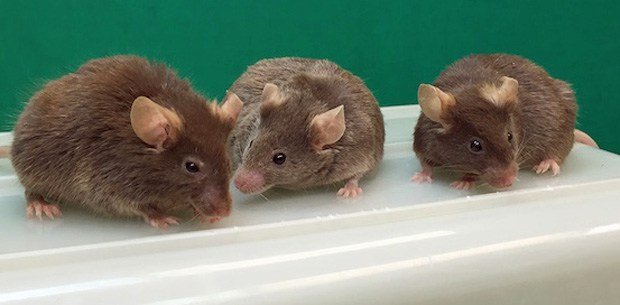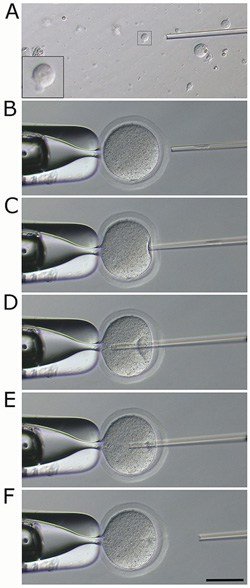
Three males lacking any Y chromosome genes produced by ROSI. The males shown on the left and right are 2 years and 1 month old, and the male in the center is 1 year and 10 months old. (photo credit: Yasuhiro Yamauchi)
Two years ago, the University of Hawaiʻi at Mānoa team led by Monika A. Ward, professor at the Institute for Biogenesis Research, John A. Burns School of Medicine, demonstrated that only two genes of the Y chromosome, the testis determinant factor Sry and the spermatogonial proliferation factor Eif2s3y, were needed for male mice to sire offspring with assisted fertilization. Now, the same team, with a collaborating researcher from France, Michael Mitchell from INSERM, Marseille, took an additional step and produced males completely devoid of the entire Y chromosome.
 In this new study, scheduled for online publication in the journal Science on January 29, 2016, Ward and her UH colleagues describe how they generated the «No Y» males and define the ability of these males to produce gametes and sire offspring.
In this new study, scheduled for online publication in the journal Science on January 29, 2016, Ward and her UH colleagues describe how they generated the «No Y» males and define the ability of these males to produce gametes and sire offspring.
Shedding new light on Y chromosome gene function and evolution
«Most of the mouse Y chromosome genes are necessary for development of mature sperm and normal fertilization, both in mice and in humans," Ward said. «However, when it comes to assisted reproduction, we have now shown that in the mouse the Y chromosome contribution is not necessary.»
The study provides new important insights into Y chromosome gene function and evolution. It supports the existence of functional redundancy between the Y chromosome genes and their homologues encoded on other chromosomes. «This is good news," Ward said, «because it suggests that there are
The development of assisted reproduction technologies (ART) allows bypassing various steps of normal fertilization by using immotile,
Source: http://www.hawaii.edu/news/2016/01/28/y-gene-not-necessary-for-assisted-reproduction-of-mice/


